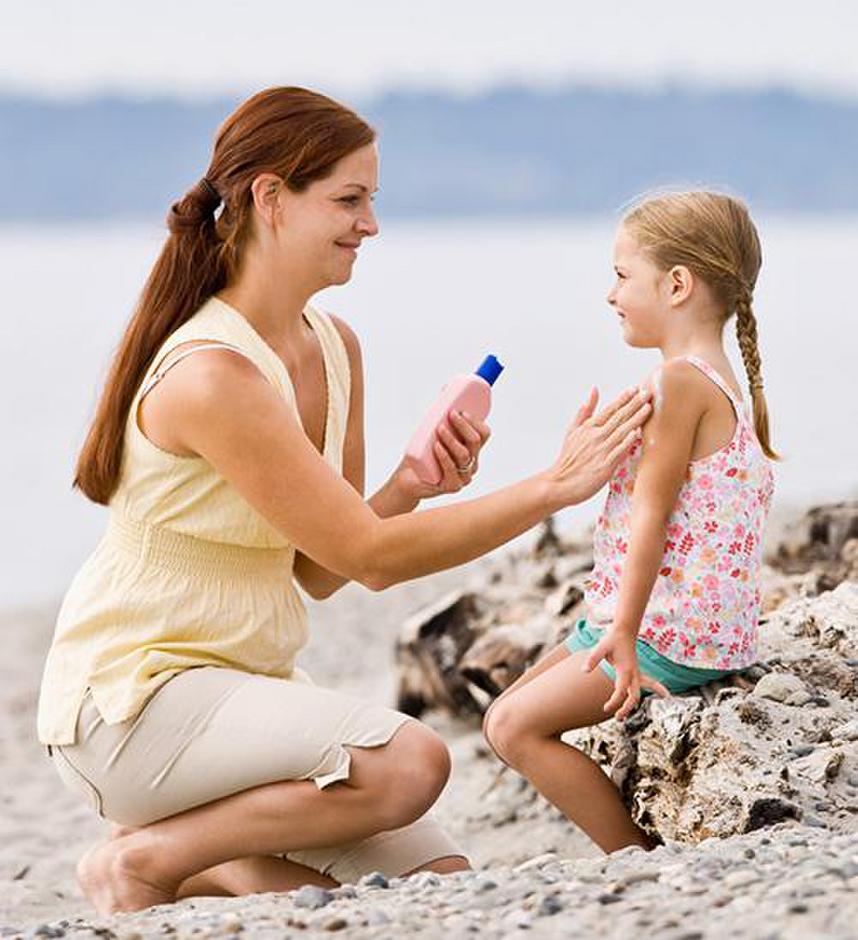UVA vs. UVB Rays
The sun projects two types of ultraviolet light (UVA and UVB) that can harm your skin. Your skin is made up of several layers including the epidermis and the dermis. UVB is a short wave ultraviolet sun radiation that can penetrate to the epidermis layer and cause sunburn. UVA is a long wave ultraviolet sun radiation that can penetrate all the way to the dermis layer of the skin. Over time UVA rays can cause premature aging, wrinkles, and age spots. It is important to protect your skin against both UVA and UVB because too much exposure to either can cause sunburn, skin damage, and skin cancer.
SPF/Broad Spectrum Protection
The term SPF stands for Sun Protection Factor. A SPF rating can be confusing and misleading. The SPF number represents how long it will take the UVB rays to redden the skin when using sunscreen as compared to without using a sunscreen. For example, a SPF rating of 30 means that, theoretically, it will take 30 times longer for skin to redden then without using a sunscreen. Broad-spectrum means that a sunscreen also provides protection from UVA rays. It is sometimes difficult to avoid the sun during the peak hours of 10 am – 2 pm, but you can help protect your skin against both UVA and UVB rays with a high SPF, broad-spectrum sunscreen. Dermatologists recommend using a sunscreen with a SPF 30 or more. The FDA has proposed a regulation that would limit the maximum SPF value on sunscreen labeling to SPF 50+.
Chemical vs. Physical Sunscreens
Sunscreen ingredients are also important, especially if you have sensitive skin. Chemical sunscreens absorb into the skin and dissipate the sun’s rays. These sunscreens are usually easy to apply and transparent but can be irritating to sensitive skin. Physical sunscreens provide a mineral layer that will remain on top of the skin and reflect the UVA/UVB rays. They typically leave a slight white residue but can be easily tolerated by those with sensitive skin. If you need a physical sunscreen, look for the active ingredients zinc oxide and titanium dioxide.
Water Resistant
A water resistant sunscreen means that the SPF level remains effective after 40 or 80 minutes in the water. UV rays can penetrate through water, so be sure to reapply sunscreen every 2 hours and after swimming in order to protect your skin at the highest SPF level.
Sunscreen Protection
Vanicream™ Broad Spectrum Sunscreens have been formulated to avoid common chemical irritants for those with sensitive skin. They are dye-free, fragrance-free, lanolin-free, paraben-free, and free of formaldehyde releasers. No oxybenzone, PABA-free, and gluten-free. All of our sunscreens are 3rd party tested for label claims such as: SPF rating, broad-spectrum, water resistance, and to ensure they are non-comedogenic (do not cause blackheads). If used with other sun protective measures, such as long-sleeved shirts, pants, hats, and sunglasses, they decrease the risk of skin cancer and early skin aging caused by the sun. Always wear sunscreen when outdoors. The sun is still projecting rays to the earth even on a cloudy day.
FDA
FDA sunscreen testing guidelines for SPF and water-resistant claims: http://www.accessdata.fda.gov/scripts/cdrh/cfdocs/cfcfr/CFRSearch.cfm?fr=352.76
Skin Cancer Foundation; UVA & UVB http://www.skincancer.org/prevention/uva-and-uvb
